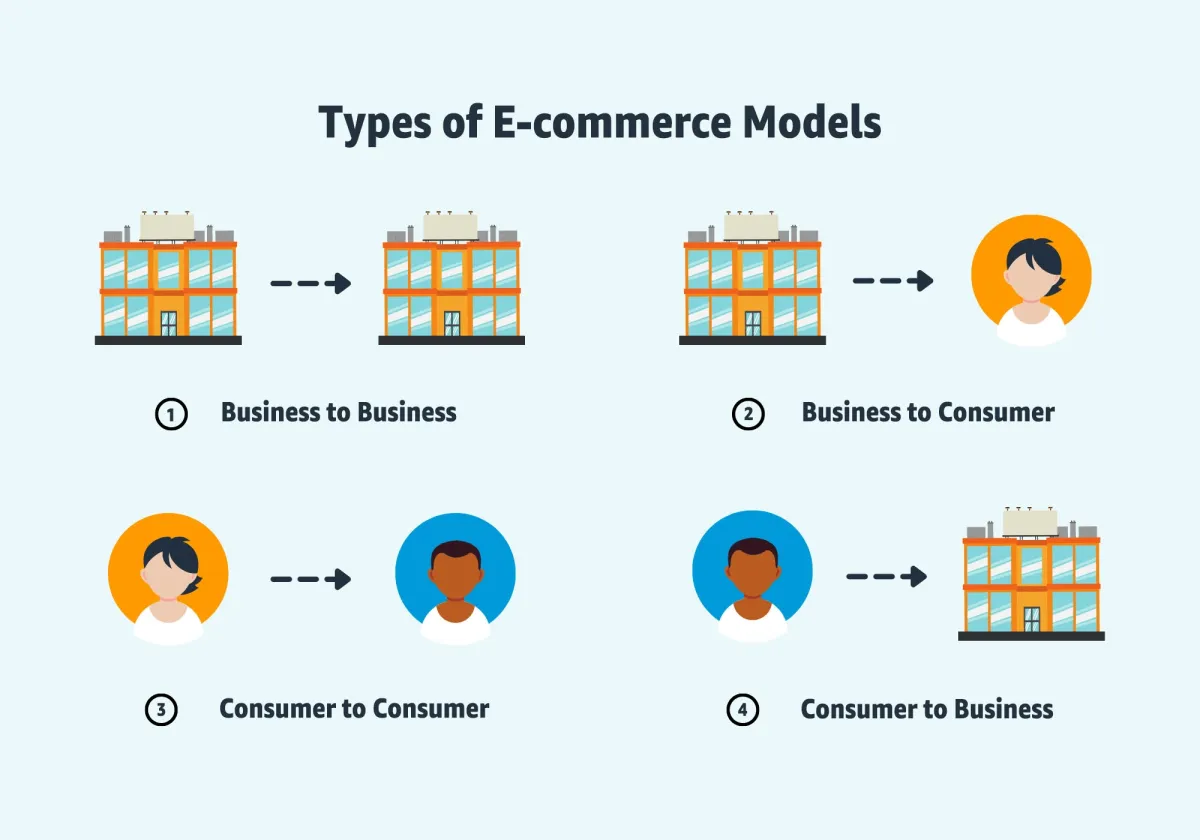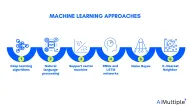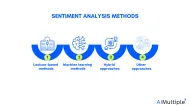The e-commerce market is estimated to surpass $5 trillion by 2026.1 However, as the needs of consumers and businesses are constantly evolving, companies face difficulty in maintaining high customer satisfaction levels to stand out in the market. E-commerce businesses increasingly use sentiment analysis to overcome this issue and better understand their customers:
| E-Commerce Application | Challenge Overcome | Technique/Tool Used | How It Helps |
|---|---|---|---|
| Product Reviews | -Customer churn, -Poor service quality | SVM, Naïve Bayes, Aspect-Based Sentiment Analysis | Detects satisfaction/dissatisfaction drivers, informs product/service improvement |
| Social Listening | -Website crashes, -Security breaches | BERT, CNN-BiLSTM with Attention Mechanism | Monitors real-time sentiment trends, supports crisis response and brand protection |
| Competitor Analysis | -Unregulated product prices, -Brand loyalty gaps | NLP, Hybrid SA models, Transformer-based models | Tracks market perception, reveals pricing and delivery-related sentiment insights |
Explore:
- Techniques of e-commerce sentiment analysis
- Reasons for revenue loss in e-commerce businesses
- How to benefit from sentiment analysis to recover from these losses
- Best practices of sentiment analysis applications in the e-commerce industry.
Current techniques of sentiment analysis in E-Commerce platforms
Sentiment Analysis (SA), also known as opinion mining, is essential for e-commerce platforms to understand customer sentiment, aiming to classify feedback as positive, negative, or neutral. This classification provides actionable insights, helping businesses improve products and customer experiences. SA primarily involves two main categories: Machine Learning-Based Techniques and Deep Learning-Based Techniques.2
1. Machine Learning-Based Techniques
Machine learning methods rely on statistical models that classify sentiments based on features like word frequencies, sentiment lexicons, and grammatical structures. These techniques, such as Support Vector Machine (SVM) and Naïve Bayes (NB), require smaller datasets and less computational power compared to deep learning. Human intervention is occasionally necessary to optimize performance during training.
1.1. Popular Algorithms
Algorithms like SVM and NB are widely used for e-commerce sentiment classification. For instance, Hantoro et al. used SVM for analyzing sentiments on the Shopee app, achieving 80.9% accuracy in classifying positive and negative reviews.3
Similarly, Pratama et al. applied SVM to beauty product reviews, successfully categorizing sentiments.4
1.2. Comparison with Other Models
Studies have consistently shown SVM and NB to be highly accurate. Elmurngi and Gherbi found that SVM outperformed other machine learning models, including Logistic Regression (LR) and Decision Trees, in detecting unfair reviews on e-commerce sites.5
1.3. Beyond Sentiment Classification
Machine learning methods can also evaluate platform quality. For example, NB helped identify dimensions needing improvement on the Indonesian platform Tokopedia, like personalization and reliability.6
2. Deep Learning-Based Techniques
Deep learning, in contrast, automatically learns complex features from text, effectively handling vast data without manual intervention. This capability makes deep learning ideal for capturing nuanced sentiment variations, especially on platforms with extensive user reviews.
Models commonly used include Convolutional Neural Networks (CNN), Recurrent Neural Networks (RNN), Long Short-Term Memory (LSTM) networks, and newer transformer-based architectures like BERT and GPT.
2.1. Convolutional Neural Networks (CNN)
Originally developed for image analysis, CNNs are increasingly applied in sentiment analysis. CNNs can capture local text patterns, making them effective for extracting sentiment-related features. Zuheros et al. demonstrated the effectiveness of CNN-LSTM combinations, achieving high accuracy in aspect-based sentiment analysis (ABSA).7
2.2. Recurrent Neural Networks (RNN) and Variants
RNNs, especially Bidirectional LSTM (BILSTM), are powerful for handling sequential data, allowing models to learn context from both past and future text inputs. This makes RNNs well-suited for understanding nuanced customer sentiments across multiple sentences. Studies by Agarap and others have shown that BILSTMs achieve high accuracy and F1 scores in sentiment tasks.8
2.3. Attention Mechanisms and BERT
BERT, a model based on attention mechanisms, has revolutionized SA. It captures relationships between words irrespective of their position in the sentence, enhancing sentiment prediction accuracy. Complex models like CNN-BiLSTM with attention mechanisms further improve performance by focusing on specific sentiment-relevant words in reviews.
3. Hybrid Approaches
Recent developments also explore hybrid approaches that combine machine learning and deep learning techniques, or that integrate multiple neural architectures.
By blending the interpretability of machine learning methods with the automatic feature extraction of deep learning, hybrid models are able to handle various sentiment nuances across multiple languages and formats on e-commerce platforms. This adaptability ensures more accurate, real-time sentiment insights for e-commerce providers.
Reasons for revenue loss in e-commerce businesses
Customer churn
Customer churn remains one of the largest challenges in the e-commerce industry, with online shopping showing a high churn rate—exceed 70%.9 This loss rate underscores the need for deeper engagement strategies that leverage sentiment analysis to assess customer satisfaction levels and brand loyalty.
By employing natural language processing (NLP) techniques, companies can perform sentiment analysis on customer feedback from social media platforms, online reviews, and customer review data to understand customer preferences and opinions. This allows businesses to proactively address negative sentiments and enhance customer experience, ultimately reducing churn and building a stronger competitive edge.
Poor service quality
A significant reason for revenue loss in e-commerce is the gap between perceived service quality and customer expectations.10 If customers perceive a disconnect between the promised and actual service, negative sentiments can spread quickly, impacting brand reputation.
Through sentiment analysis tools that can gauge customer sentiments from product review data and customer reviews, companies gain the ability to identify and mitigate customer pain points.
Leveraging aspect-based sentiment analysis, which dives into specific elements like service speed, ease of purchase, and delivery, businesses can target and resolve specific customer needs. By addressing negative reviews and focusing on positive sentiment, companies can make data-driven decisions to improve overall customer satisfaction.
Security breaches or fraud
Only in the third quarter of 2024, data breaches exposed over 422 million records globally and the number accelerates exponentially. 11 According to a recent report, the retail industry is the most vulnerable to e-commerce attacks.12
These security incidents not only jeopardize customer data but also foster negative emotions like distrust and dissatisfaction, which are frequently expressed in customer reviews and social media posts.
Through market research sentiment analysis and emotion detection, companies can analyze the overall sentiment of customer responses to security issues. By monitoring for negative sentiment trends, businesses can better understand how customer loyalty and satisfaction levels are affected and take steps to reassure customers, using this insight to refine security protocols and strengthen brand reputation.
Unregulated product prices
Competitive pricing and free shipping are primary motivators for online shopping, according to customer opinions gathered through product review analysis and sentiment analysis. However, when competitors provide lower prices or faster and free shipping options, negative sentiments may develop among customers who feel they’re getting a poor deal.
Monitoring customer feedback on price perception can reveal market trends and help identify emerging trends around customer needs.
Through natural language processing techniques, companies can analyze product review sentiments to see where they stand in terms of customer satisfaction. This kind of competitive analysis allows companies to stay on top of pricing and shipping options that align with customer preferences.
Website crashes
Meta’s six-hour crash in recent years cost the company almost $80 million, with customer trust severely impacted due to widespread negative reviews and social media monitoring revealing disappointment.13
Sentiment analysis lets businesses gauge customer sentiment during such events by analyzing social media platforms and online reviews. By tracking negative words and negative sentiments expressed during outages, companies can quickly implement damage control strategies to restore positive sentiment and mitigate the long-term impact on brand reputation.
Proactively using machine learning models to prevent downtime, or at least prepare for efficient crisis management, can play a critical role in maintaining customer loyalty and minimizing revenue loss.
How sentiment analysis can help
NLP techniques such as sentiment analysis can be implemented in the e-commerce industry to better understand customers’ online purchasing decisions. In general, sentiment analysis helps to:
- Understand the drive to buy or not
- Detect emotions of the customers regarding products, services, or the brand
- Recognize public opinion on targeted products or services
- Examine any patterns and intentions
- Make predictions about the customer behavior
Top 3 applications of sentiment analysis in the e-commerce industry
Figure 1. The most common e-commerce models

Source: Amazon14
1. Product Reviews
Customers can now share their opinions, what they like and didn’t like, or their suggestions in online product reviews. That’s why analyzing the sentiment in customer reviews is of great importance for companies. It can provide crucial information regarding which products are most and least liked and what customers’ compliments and complaints are.
2. Social Listening
Social media is also great for understanding public sentiment regarding your products or services. You can use various channels like Twitter, Instagram, or the Web to get insights into how you are mentioned and what the public feels or thinks about your brand.
3. Competitor Analysis
As there is great competition in the e-commerce industry, analyzing your competitors can help you to figure out how to stand out in the market. Using social media, you can learn about their strengths and weaknesses by analyzing the public sentiment toward their brands.
Further Reading
- Top Sentiment Analysis Challenges and Solutions
- How to Benefit From Sentiment Analysis in the Retail Industry?
You can also check our data-driven list of sentiment analysis.
Get in touch if you have any questions:
External Links
- 1. Global Ecommerce Growth Forecast 2022 | Morgan Stanley . Morgan Stanley
- 2. Huang, H., Zavareh, A. A., & Mustafa, M. B. (2023). Sentiment analysis in e-commerce platforms: A review of current techniques and future directions. IEEE Access, 11, 90367-90382.
- 3. K. K. Hantoro, D. Handayani and S. Setiawati, “A implementation of text mining in sentiment analysis of Shopee Indonesia using SVM”, Bull. Inf. Technol., vol. 3, no. 2, pp. 115-120, 2022.
- 4. M. R. Pratama, F. A. G. Soerawinata, R. R. Zhafari and H. N. Imanda, “Sentiment analysis of beauty product E-commerce using support vector machine method”, Jurnal RESTI Rekayasa Sistem dan Teknologi Informasi, vol. 6, no. 2, pp. 269-274, Apr. 2022.
- 5. E. I. Elmurngi and A. Gherbi, “Unfair reviews detection on Amazon reviews using sentiment analysis with supervised learning techniques”, J. Comput. Sci., vol. 14, no. 5, pp. 714-726, May 2018.
- 6. P. K. Sari, A. Alamsyah and S. Wibowo, “Measuring E-commerce service quality from online customer review using sentiment analysis”, J. Phys. Conf. Ser., vol. 971, Mar. 2018.
- 7. C. Zuheros, E. Martínez-Cámara, E. Herrera-Viedma, and F. Herrera, (2021) “Sentiment analysis based multi-person multi-criteria decision making methodology using natural language processing and deep learning for smarter decision aid. Case study of restaurant choice using TripAdvisor reviews”, Inf. Fusion, vol. 68, pp. 22-36.
- 8. A. F. Agarap, “Statistical analysis on E-commerce reviews with sentiment classification using bidirectional recurrent neural network (RNN)”, arXiv:1805.03687, 2018.
- 9. How to detect churn risk factors in your eCommerce store . Omniconvert
- 10. Dhar, R.L.., 2015. Service quality and the training of employees: The mediating role of organizational commitment. Tourism Management, 46(1), pp.419-430, DOI: 10.1016/j.tourman.2014.08.001.
- 11. Data records breached worldwide Q3 2024| Statista. Statista
- 12. Trustwave SpiderLabs Research: Defending the Retail Sector in 2024 | Trustwave.
- 13. Facebook’s six-hour outage costs an estimated $79m in ad revenue loss | The Drum. The Drum
- 14. E-commerce in Singapore: The Ultimate Guide.




Comments
Your email address will not be published. All fields are required.